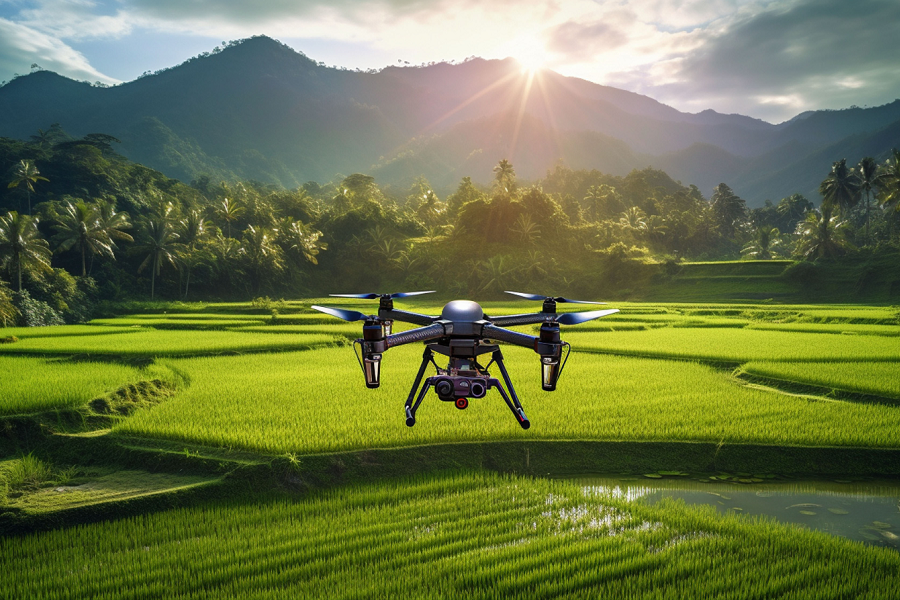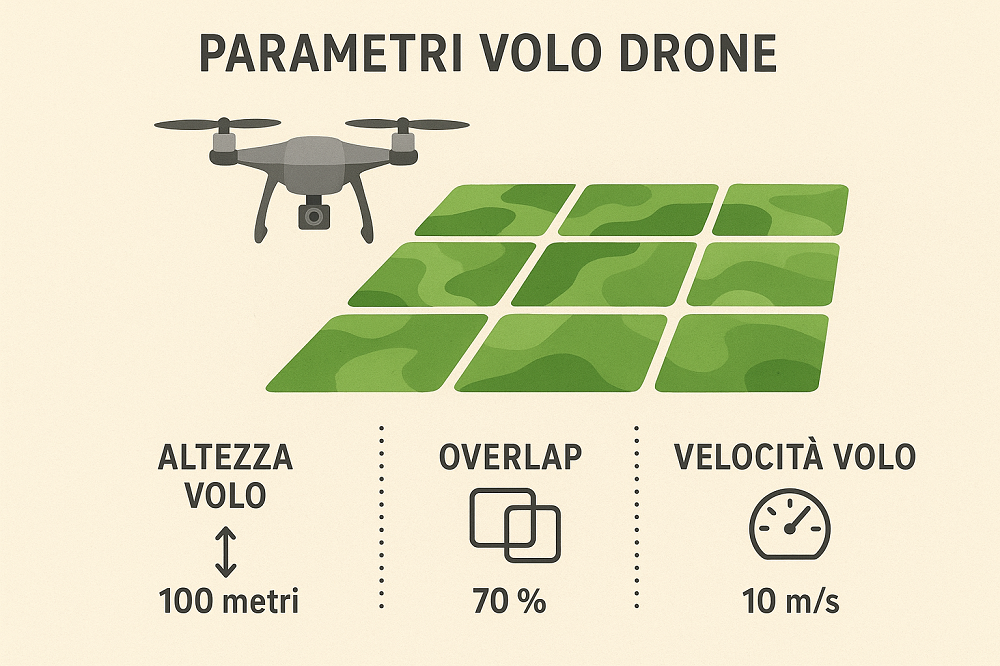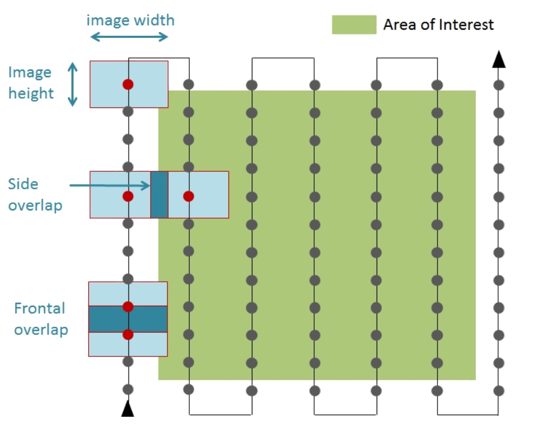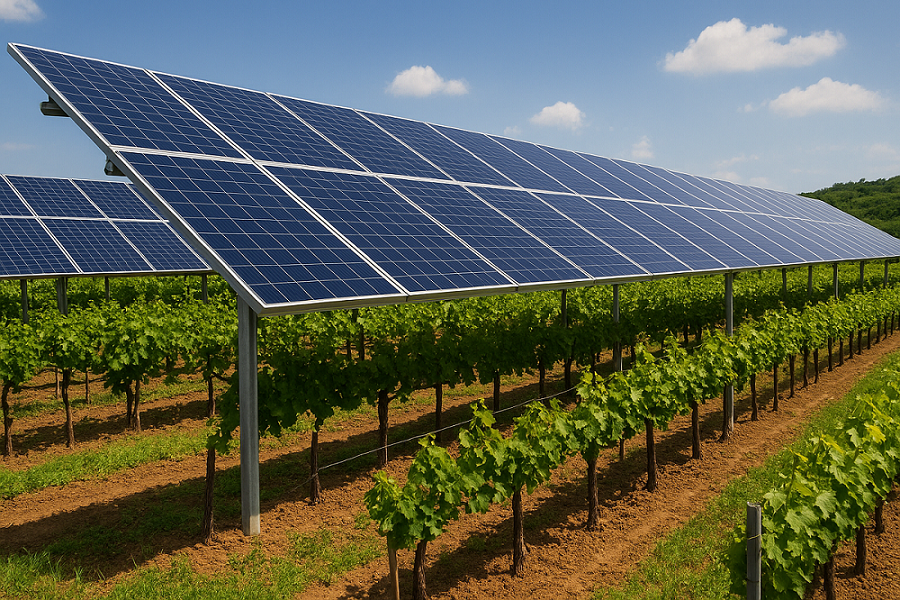by Luana Centorame
Share

Introduction
In precision agriculture, the drone is now an irreplaceable tool: it allows us to observe crops from above, collect visual, multispectral and thermal data and transform the information into targeted agronomic decisions. However,
There is often a tendency to consider the flight as the “central” moment of the mission, but in reality the most important part takes place before takeoff. Careful planning makes it possible not only to ensure the quality of the data collected, but also to operate in accordance with ENAC regulations, avoiding risks to people, property and equipment.
Setting up a flight correctly means defining in advance a number of parameters that directly affect the final outcome: image resolution, overlap between images (overlap), flight height, flight speed and quality of processed data.
Key parameters for the flight mission
The technical parameters that directly determine data quality are: flight altitude, lateral and frontal overlap, and flight speed. These parameters can be modulated through the radio control interface. There are other parameters that, indirectly, are related to the previous ones: estimated flight time and ground resolution.
- Flight height directly affects spatial resolution (or GSD, Ground Sampling Distance) and mission duration (the lower the flight height, the longer the mission duration). On the one hand, flying too high reduces the quality of detail. On the other, flying at too low an altitude means having to take more shots and a consequent higher battery consumption and longer times. Depending on the objective of the survey, it is necessary to choose a flight height that gives adequate resolution for it (e.g., for a weed survey, the flight height could be quite low to detect even small details).
- Managing the frontal and lateral over lap (side-overlap and frontal-overlap) between images is crucial to obtain properly processable data and compliant maps and models. Overlap refers to the actual overlap of the image taken at one point with adjacent ones (front, back, side). A good overlap to ensure good photogrammetric reconstruction is 70-80%. Insufficient overlap generates holes and artifacts in the survey results, with the only solution being to repeat the flight with adequate overlap.
- Flight speed can be adjusted within a certain range set by drone manufacturers based on the other parameters mentioned above, so it is in fact a variable dependent on flight height (resolution) and desired overlap. Too high a speed can result in the “motion blur” effect, which is the blurring of images due to advancing too fast compared to the speed at which the photos are taken. Conversely, too low a speed reduces flight efficiency with longer mission duration.

Fig.1: Main parameters of a drone mission.
The estimated flight time depends on the height and flight speed. It is important to check this parameter as it affects battery management, considering the possibility of dividing the mission into several phases (to change the battery).
Spatial resolution (cm/pixel) depends on flight height and sensor quality. In general, a multispectral sensor requires more stability and accuracy; while a visible (RGB) camera can be deputed for coverage investigation.

Fig.2: Frontal and lateral overlap between images. In green, the area of interest. In gray, the flight mission with dots identifying the sensor snapshots.
Most common mistakes
Knowing the most common mistakes is precisely to prevent them from happening.
The first mistake is working with batteries that are not fully charged or unverified and is one of the most common causes of sudden outages and data loss. Similarly, setting incorrect flight heights not only affects the quality of the survey, but can also lead to violations of airspace regulations, with not insignificant consequences.
Another aspect that is often underestimated is sensor calibration: forgetting it means risking collecting unusable or non-comparable images over time. Weather conditions also play a decisive role: strong wind, variable light and cloudiness (partial or total) can compromise the quality of acquired images. Finally, the presence of obstacles such as trees, power lines, or buildings, if not properly assessed, can turn a simple flight into a potential operational hazard.
Attending to every detail before take-off means drastically reducing the possibility of error and ensuring the collection of consistent, homogeneous and truly useful data for agronomic analysis.
Pilot checklist
To avoid unforeseen problems, it is useful to always have a checklist. It is equally important to customize the checklist according to your fleet of drones and your type of survey.
An example of a checklist for drone use in agricultural surveys is as follows:
In the days leading up to the flight mission:
- Check airspace (restricted areas, NOTAMs, CTRs, etc.).
- Check for obstacles in the survey area (tall trees, pylons, etc…), congested areas or sensitive infrastructure
- Check the charge status of the drone and radio control batteries
- Check the payload, propellers, motors and drone structure for damage
- Format SD cards and make sure you have enough memory for photos
- Check weather forecast and K-index (electromagnetic disturbances)
- Simulate the flight mission in the dedicated application
- Set the flight parameters and choose the best combination
- Save the flight mission with the identified parameters
- Make sure you have the documents to fly safely (driver’s license, insurance) and any necessary permits in place
In the field at the time of the flight mission:
- Have spare batteries and emergency kit (first aid kit, fire extinguisher)
- Control the area of the flight mission so as to comply with regulations
- Check and clear the areas designated for takeoff and landing
- Check for the presence of uninformed persons in the overflight area
- Calibrate multispectral sensors using appropriate calibration panels
- Carry out the mission while maintaining visual control of the drone and surrounding area at all times

Fig.3: Typical drone mission in agricultural field.
Conclusions
Flight planning is a key step. Setting parameters correctly before takeoff means ensuring quality data from which to generate reliable maps. The maps must support agronomic decisions. For this reason, the flight planning and field flight phases must be considered an integral part of the work: this is when technical expertise, field knowledge and attention to safety come together.
Thanks to the iDrone service, the Agrobit team thinks of everything. Our method involves flight planning, aerial image acquisition and, finally, we transform the collected data into agronomic decision support maps.
This way, the farmer and agronomist can focus on what really matters: interpreting the maps and using objective data to make more informed, sustainable and profitable decisions.




